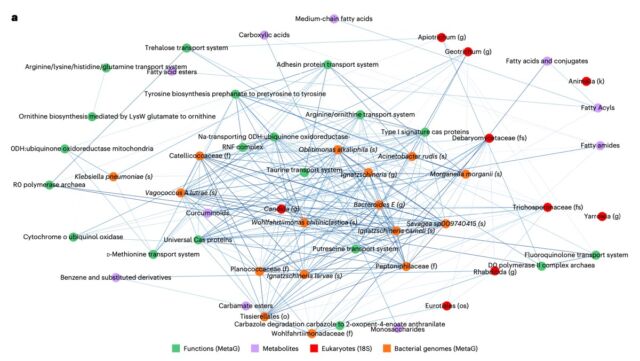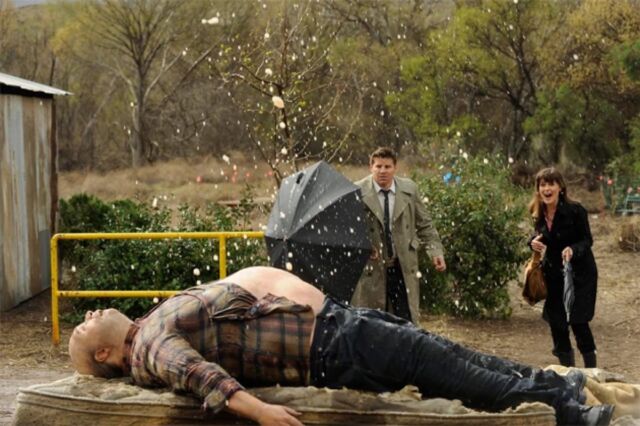Establishing a precise time of death (the postmortem interval, or PMI) upon discovery of a corpse is notoriously challenging, however easy fictional medical examiners might make it seem. Some forensic scientists use the life cycle of blow flies, which seek out and lay eggs on corpses. But there’s a lot of variability between fly species and seasonal effects, so it would be helpful to develop new methods.
It turns out that studying the microbes that flourish in decomposing corpses can provide helpful clues. Forensic scientists have now identified some 20 microbes they believe constitute a kind of universal network driving the decomposition of dead animal flesh, according to a new paper published in the journal Nature Microbiology.
“One of the principal questions of any death investigation is ‘when did this person die?’” said Nancy La Vigne, director of the National Institute of Justice, which funded the research. “This continuing line of NIJ-funded research is showing promising results for predicting time of death of human remains, aiding in identification of the decedent, determining potential suspects, and confirmation or refutation of alibis.”
The work builds on nearly a decade’s worth of prior research. For instance, in 2015, scientists were able to accurately estimate the time of death of mice and human corpses to within a two-to-four-day window, even after the bodies had decomposed for weeks. Earlier experiments had shown that, regardless of season, surroundings, and the species of the dead, communities of flesh-eating microbes seem to have a predictable timetable for when they dine on corpses. As Beth Mole reported for Ars at the time, “Those dining times relate to the stages of decomposition that a body undergoes—from fresh meat to bloated carcass, to rupturing and seeping nitrogen-rich fluids to actively decaying, then to an eventual dry state. Each stage attracts specific body-munching microbes, many with a taste for amino acids.”
But the researchers weren’t sure if the microbes’ finely timed transition would look the same in different scenarios—such as carcasses in a desert versus in a forest, in the summer versus winter, or in corpses rotting peacefully versus those being picked at by scavengers. The 2015 experimental results showed that temperature determined the pace of the microbial dining schedule. But the schedule was remarkably similar between the four human bodies used in the experiment, as well as the mice, even given the outdoor exposure. So the microbial munching pattern could be a universal clock for calling time of death.
This latest paper extends the investigative scope to take a closer look at the specific kinds of microbes that tend to flourish in decomposing corpses. “When you’re talking about investigating death scenes, there are very few types of physical evidence you can guarantee will be present at every scene,” said co-author David Carter, a forensic scientist at forensic sciences at Chaminade University of Honolulu in Hawaii. “You never know if there will be fingerprints or bloodstains or camera footage. But the microbes will always be there.” In this latest study’s case, “We’re talking about outdoor death scenes,” he added. “It can be difficult to gather information in those types of investigations.”

J. Metcalf et al., 2024
This time around, the team conducted outdoor experiments between 2016 and 2017 on 36 human cadavers at three different facilities (body farms): the Colorado Mesa University Forensic Investigation Research Station (FIRS), the Sam Houston State University Southeast Texas Applied Forensic Science (STAFS) Facility, and the University of Tennessee Anthropology Research Facility (ARF). Bodies were studied over 21 days during different seasons (spring, summer, fall, and winter). Daily samples were taken of both the grave soils associated with decomposition and skin from the head and torso of the bodies, as well as control soil samples. Daily temperature, humidity, and other environmental factors were also recorded.
The three facilities are located in two distinct climate types (temperate forest and semi-arid steppe), yet the team identified the same 20 decomposing microbes on all of the bodies, which once again showed up in predictable munching patterns regardless of outdoor variables. “It’s really cool that there are these microbes that always show up to decompose animal remains,” said co-author Jessica Metcalf of Colorado State University. “Hopefully, we’re busting open this whole new area of ecological research.”

20th Century Fox Television
These particular microbes aren’t found in databases of microbes commonly found in soil, human skin, and gut microbiomes, so how do they find their way to tasty decomposing flesh? The authors suggest insects likely play a key role since these universal decomposer microbes are commonly found on insects like carrion beetles and blowflies.
The authors also used their new data in conjunction with machine learning to develop a predictive model for time of death based on microbial activity. The model performed remarkably well, predicting time of death within three calendar days in independent tests. The team attributes lingering errors to intrinsic factors like BMI/total body mass and extrinsic factors like scavengers and precipitation. These will be studied in future research to further improve predictive models
DOI: Nature Microbiology, 2024. 10.1038/s41564-023-01580-y (About DOIs).


